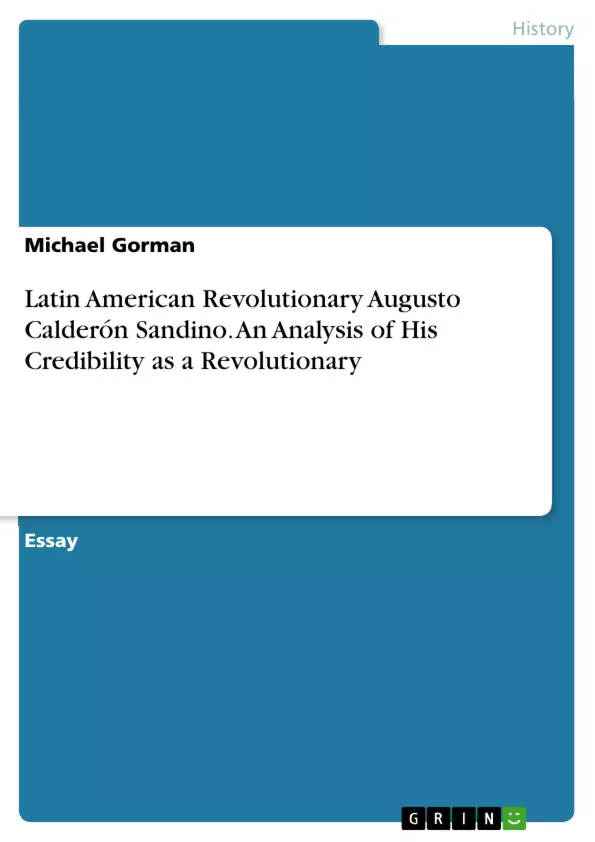Augusto Calderón Sandino was a Nicaraguan revolutionary who combated the United States Marines and the Nicaraguan federal government in the late 1920s and early 1930s. This
essay will explore Augusto Calderón Sandino’s credibility as a revolutionary as well as establishing what category, or categories, of revolutionary that Sandino falls under. In doing so, it will be analyzing his role as a liberal revolutionary, political revolutionary, nationalist revolutionary, military revolutionary, professional revolutionary, and an agitator.
Inhaltsverzeichnis (Table of Contents)
- Latin American Revolutionary, Augusto Calderón Sandino
- Thesis Proposal
- Introduction
- Methods
- Contextual Essay
- The Monroe Doctrine
- The Doctrine's Evolution
Zielsetzung und Themenschwerpunkte (Objectives and Key Themes)
This research paper aims to analyze the revolutionary status of Augusto Calderón Sandino during Nicaragua's periods of occupation. The paper will explore Sandino's motivations, goals, and achievements to determine his revolutionary type, as well as his influence and legacy in Nicaragua and neighboring Central American countries.
- The impact of U.S. intervention in Nicaragua
- The role of the Monroe Doctrine in justifying U.S. intervention
- Sandino's revolutionary motivations and goals
- Sandino's legacy and influence in Central America
- The evolution of the Monroe Doctrine over time
Zusammenfassung der Kapitel (Chapter Summaries)
- The thesis proposal provides an overview of the research project, outlining the objectives, methodology, and sources to be utilized in exploring Sandino's revolutionary role. It highlights the historical context of U.S. intervention in Nicaragua and the rise of Sandino's resistance movement.
- The contextual essay examines the origins and evolution of the Monroe Doctrine, a defining principle of U.S. foreign policy that played a significant role in justifying U.S. interventions in Latin America. The essay traces the doctrine's roots in President James Monroe's 1823 address to Congress, highlighting its shifting justifications from safeguarding American independence to protecting American business interests.
Schlüsselwörter (Keywords)
The primary keywords and focus topics include Augusto Calderón Sandino, Nicaraguan Revolution, U.S. intervention in Latin America, Monroe Doctrine, Banana Wars, Central American history, revolutionary movements, and historical analysis.
- Quote paper
- Michael Gorman (Author), 2016, Latin American Revolutionary Augusto Calderón Sandino. An Analysis of His Credibility as a Revolutionary, Munich, GRIN Verlag, https://www.grin.com/document/335860



